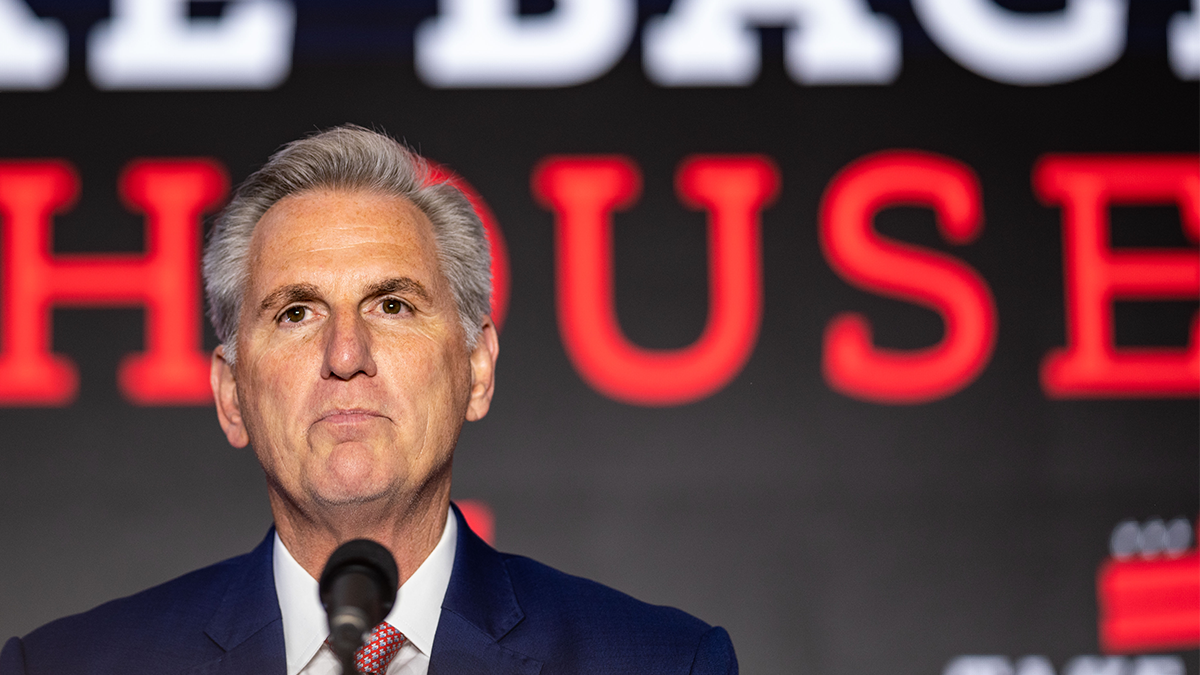Midterms 2022: What We Know and What We Don’t Know
As results from Election Day continue to trickle in, it’s still not clear whether Republicans or Democrats will control the next House and Senate, and... Read More The post Midterms 2022: What We Know and What We Don’t Know appeared first on The Daily Signal.

As results from Election Day continue to trickle in, it’s still not clear whether Republicans or Democrats will control the next House and Senate, and by how much. However, it’s clear that Republicans suffered both major wins and major losses in midterm elections across the nation.
“Some of the big wins we saw in Florida. [Gov. Ron] DeSantis got about 19 [percentage points] over [Democrat Charlie] Crist, which is a massive margin. This is a state that Donald Trump carried in 2020 by 3 points,” says Noah Weinrich, communications director for Heritage Action for America, the grassroots arm of The Heritage Foundation. (The Daily Signal is Heritage’s multimedia news organization.)
“Historically before that, it’s been seen as a swing state,” Weinrich says of Florida. “It’s the bellwether.”
On the flip side, however, Republicans suffered a loss in Pennsylvania’s Senate race, where Lt. Gov. John Fetterman, a Democrat, defeated Dr. Mehmet Oz, a Republican.
“So some of the losses we saw … were in really tight races like Pennsylvania. Dr. Oz lost against John Fetterman. I haven’t checked the final margin, but it was only by, I believe, 2 points or something like that,” Weinrich says.
“Now, that was a state that President Trump won very narrowly in 2016 [and] lost very narrowly in 2020,” he says.
Weinrich joins this episode of “The Daily Signal Podcast” to discuss the wins and losses of Election Day, the races still up in the air as of the podcast’s recording, and key issues that drove voters to the polls.
Listen to the podcast below or read the lightly edited transcript.
Samantha Aschieris: Joining today’s show is Noah Weinrich. He’s the communications director for Heritage Action. Noah, thanks so much for joining us.
Noah Weinrich: Yeah, absolutely. Thank you for having me.
Aschieris: Of course. I want to talk a little bit about Election Day. We don’t know all of the results as of now, as of this recording, but I want to start with some of the big wins for conservatives that we saw.
Weinrich: Yeah, absolutely. So, there were some huge wins for conservatives. I won’t sugarcoat it—there were some big losses as well.
Some of the big wins we saw in Florida. [Ron] DeSantis got about 19% over [Charlie] Crist, which is a massive margin.
This is a state that Donald Trump carried in 2020 by 3 points. Historically, before that, it’s been seen as a swing state. It’s the bellwether. [George W.] Bush won in 2000 by a few hundred or a few thousand votes. We didn’t know that result for months. But now it looks like Florida has become a ruby red state, largely thanks to DeSantis and his effective political machine down there and his effective policies.
[Marco] Rubio did very well as well. He got about 16% over his opponent, Val Demings, in an expensive race. Anna Paulina Luna, a House candidate down there, she did a great job. Very conservative candidate. She did excellent. She won.
So Florida was a bright spot in a mixed bag night.
There were bright spots in New York. Lee Zeldin did not flip the governorship, but that was always going to be a stretch. He came within 5 points of Kathy Hochul, which is amazing in a state like New York. She won by 60% last time around, she only got 53% this time.
Aschieris: Wow.
Weinrich: So that is an accomplishment. Four Long Island seats went Republican as well. That is very impressive. There was a seat that flipped in New Jersey as well. There was a seat in Virginia. So you saw a lot of pickups along the Eastern Seaboard in some of these swing suburban counties. That was really impressive. Elsewhere—Monica De La Cruz-Hernandez out in Texas. That was a great pickup.
It’s still too early to call in some of these races like Nevada and Arizona. We’re going to be waiting on results for possibly days, unfortunately. Same in Georgia. It’s going to a runoff.
Now, I will say that, for a long time, the pundit class was predicting that [Raphael] Warnock was going to win outright. They didn’t believe in Herschel Walker. They laughed at him. But now he came within a point of Warnock. He’s taking him to a runoff. That is impressive.
Brian Kemp won the state by about 8 points, I believe. That is a big win. I think it’s a rejection to this idea that Georgia has become totally purple.
And we saw governors across the map win. I believe not a single Republican incumbent governor was unseated. People were saying that Kevin Stitt in Oklahoma was going to be unseated. He won by double digits.
Same in the Senate. No incumbent republicans lost their seat. People were saying Mike Lee, he was going to have a problem with Evan McMullin. He did not. Won by double, double digits. Ron Johnson in Wisconsin, he won over his challenger, Mandela Barnes. In North Carolina, Ted Budd—who was not an incumbent senator, but he was representative—he won handily over his opponent, Cheri Beasley.
So there are some serious conservative victories, a lot of statewide victories. But of course, the map was mixed.
Aschieris: And you brought up Warnock. This is actually his second runoff. If our audience remembers, he was also in a Senate runoff in January of 2020 against then-Sen. Kelly Loeffler. So it’ll be interesting. I think the runoff is in December. I don’t remember the dates.
Weinrich: It’s early December.
Aschieris: December. I think it’s, like, Dec. 5 maybe. But that’ll be an interesting race to watch. We’ll, of course, be tracking that and keeping everyone updated on the results from that. On the flip side of the wins that we saw for conservatives, break down some of the losses that we saw.
Weinrich: So, some of the losses we saw, some of those were in really tight races like Pennsylvania. Dr. [Mehmet] Oz lost against John Fetterman. I haven’t checked the final margin, but it was only by, I believe, 2 points or something like that. Now, that was a state that President Trump won very narrowly in 2016, lost very narrowly in 2020. So this was always going to be a tight race.
The polls, up until the few weeks before, the two weeks, really, before the election, had Oz down by several points. He only started gaining ground in the last several weeks. And so, unfortunately, those polls looked like they were actually pretty accurate, but they were within the margin of error. So he lost narrowly.
New Hampshire, Don Bolduc lost to Maggie Hassan by about 8 or 9 points. That was a tougher loss. The polls showed him really gaining ground in the last few weeks and even tying the race up. But New Hampshire is New Hampshire, it’s a more liberal state in some ways than a lot of others. New England is a totally different beast from a lot of other states, and the voters there turned out. Abortion was more of an issue in New Hampshire, and Maggie Hassan, of course, had the power of incumbency. That was a tough loss.
Republicans also failed to flip a lot of governorships, including Michigan, including Wisconsin, including Pennsylvania. Pennsylvania was a big loss.
So there were some real losses and a lot of House seats Republicans narrowly lost. Of course, a lot of those were uphill battles already. You’re trying to unseat incumbents. You’re trying to flip a district, which is always harder than keeping a district. But there were some real tough losses there.
Aschieris: And just speaking of races that flipped or seats that flipped, one race that I thought was particularly interesting was in New York’s 17th Congressional District where Republican candidate Michael Lawler defeated incumbent Rep. Sean Maloney. He was also the chairman of the Democratic Congressional Campaign Committee. I saw that The Washington Free Beacon reported that this is the first time that the chairman of the Democratic Congressional Campaign Committee lost his reelection bid in 40 years.
Weinrich: Yeah, yeah. No, it’s very impressive. I mean, this is the guy who is tasked with winning the House for his whole party, and he couldn’t even keep his own seat. And he lost the House as well, which is a fitting end to his career as chairman of the DCCC.
Aschieris: Yeah. Are there any other races that flipped that were particularly interesting?
Weinrich: Yeah, for sure. I was just looking at some of them this morning. I mentioned New Jersey [District] 7, Tom Kean Jr. beat Tom Malinowski. That’s been a swing district. Malinowski has won—he actually beat Tom Kean last time by just a few points. This time, Kean was able to flip it. That is Central Jersey, suburban, has a little more of those classic Jersey white-collar Republicans.
Andy Ogles in Tennessee, Tennessee’s 5th [Congressional District], he beat the incumbent there. It was redistricted to be changed a little bit, but he won there. A very conservative candidate too. He didn’t run as a moderate just trying to squeak by. He ran as a serious conservative. Even at one point, he took a flamethrower to a pile of President [Joe] Biden’s policies. Strong guy, really strong on abortion. Very “America first.” He actually used to work for Americans for Prosperity. So he’s excellent. He’s going to be great in Congress. That was a big win as well.
Aschieris: And I want to talk more specifically about some of these policies and issues that we saw really having the biggest impact on the election. For any of you who were watching our live show on Tuesday, we had a couple different panels talking about the life issue and election integrity as well as the economy and inflation. Where did we see these issues play out on Tuesday?
Weinrich: Absolutely. It differed across the country. This is one of the reasons that you saw mixed results. People were expecting either Republicans to win everywhere or to lose everywhere, or the toss-ups to go one way or the other, but it really depended on where in the country you were.
Florida was a really bright spot. Some of the places in the Northeast were a pretty bright spot. Lee Zeldin did better than we expected in New York, even though he didn’t win. But then in the Midwest and in the Southwest, the conservative candidates didn’t do as well as we thought. And so part of that comes down to geography.
In Florida, some of the issues were COVID lockdowns, parents’ rights, the economy. And Gov. DeSantis has done a fantastic job of showing how to be the model of a conservative governor. Florida’s economy is humming. He has stood up for parents time and time again. He kept the state open. He passed the Parents’ Bill of Rights. He is protecting families.
This was an election year in a historically purple state. The temptation would be to tone things down, try to run as a moderate, keep your head down. But he didn’t, he plowed ahead because he knew that conservative policies work and that if he implemented them, he would be rewarded. And he was. So that played very well there.
Crime was a big issue in Wisconsin. That’s one of the reasons that Ron Johnson beat his opponent, Lt. Gov. Mandela Barnes. Barnes was on record encouraging the protests and even the riots in 2020 in a state that was hit particularly hard.
We all remember Kenosha, Milwaukee riots turning violent, deaths happening, buildings and blocks burning. And Barnes, as lieutenant governor, again, did nothing to stop that. Instead, he advocated for the end of cash bail. He saw these riots and said, “It’s time to make it easier for criminals to get back out on the streets.” And the people of Wisconsin rejected that.
And so crime played there in a way that it didn’t in other places, which had lower crime rates or which didn’t have the same problems with protests or riots that Wisconsin did in 2020.
I’d say election integrity was a really big issue in Arizona in particular. And they were really proved correct yesterday.
Blake Masters and Kari Lake both ran on an election integrity platform. They ran on saying, “It needs to be easy to vote, hard to cheat. There are problems in our election system and we need to fix them.” And all along, they were called conspiracy theorists, election deniers, whatever the corporate media could throw at them, and they shut it down. Kari Lake especially was amazingly adept at just shutting down the media narrative.
They knew that, yes, there are problems with our elections. We saw this in 2020. We’re seeing this now. It shouldn’t take days or weeks to know the results of the election. You also shouldn’t have a scenario in which 20% of vote-counting machines are not working in Maricopa County. This isn’t some conspiracy theory, this is fact. It’s widely reported it. There were serious problems on Election Day. And the election was being run by Secretary of State Katie Hobbs, who was up for governor. So it sure seems like there’s a clear conflict of interest.
So there were serious problems in the election. Regardless of what happens, those have to be fixed. So they were proved right in their concerns about our elections, not that you’re going to hear most of the media admit that.
Aschieris: Well, Noah, thank you so much for joining us to give us an update and tell us what we know and what we don’t know for this year’s midterm elections. We’ll have to have you back on as we continue to learn more about the results and what the next Congress is going to look like. So thank you so much. Noah Weinrich of Heritage Action, the communications director there. Thank you so much.
Weinrich: Thank you for having me.
Have an opinion about this article? To sound off, please email letters@DailySignal.com and we’ll consider publishing your edited remarks in our regular “We Hear You” feature. Remember to include the url or headline of the article plus your name and town and/or state.
The post Midterms 2022: What We Know and What We Don’t Know appeared first on The Daily Signal.
















